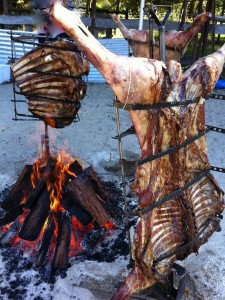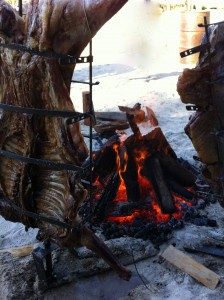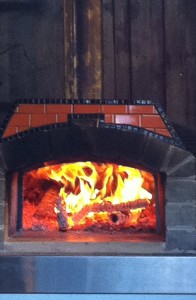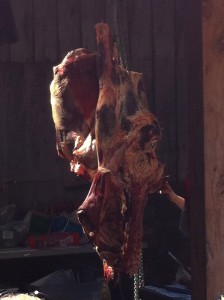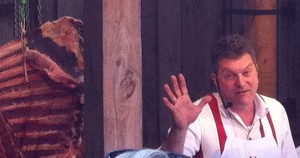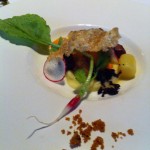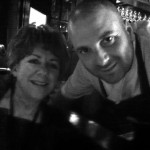Wagyu, Chang, The Whole Hog and Elvis
Sunday, March 18th, 2012
Wagyu, Chang, The Whole Hog and Elvis
The title may seem a bit of a mouthful, and frankly, it was! Neil Perry, Australia’s favourite food hero (and mine!) was holding court at the Fire MasterClass, part of the Melbourne Food & Wine Festival recently and his job was to inform the audience about Wagyu beef, and hopefully, for the sake of the breeders who hovered in the background, to convince us that it is worth its heavy price tag. It’s certainly different, stronger in taste, perhaps more meaty if that’s a thing, with a smoother texture but not buttery soft like fillet. Visibly you can see streaks of fat running through the meat when it is chilled – known as marbling- but as the meat warms up and cooks the marbling is absorbed into the muscle and gives the meat its tenderness and flavour. Steaks are best cooked medium-rare to allow time for the fat to melt – if you can still see the fat, you’ll taste it (for instance, if cooking a steak rare), which is not the aim because it will taste fatty. There is no shrinkage, and with the price, that’s a blessing. Don’t throw your hands up in horror – just yet. The fat is monounsaturated, or what is known as ‘healthy’ fat, so you can eat a little as part of a healthy diet. Perry strongly advised to get yourself a good butcher, and that about the only thing we should buy from supermarkets is toilet paper. He’s not far off the mark!
David Chang from Momofuku restaurants – one has just opened up in Sydney – was reasonably quiet on the day, but a relevant quote is, “If you don’t cook a beautiful piece of meat right, you’re an asshole.’ His jerk with allspice and chilli was memorable, so he’s definitely not in that category!
Right, next, Ed Mitchell from North Carolina…he’s been barbecuing whole hogs since he was 15 (looks like he’s been eating them, too!). He was a hoot, likeable, obviously loving what he does, dropping gems of wisdom, and deserved of the name Pit Master. First get you hog – it better be fed on acorns, peanuts, apple and other fruit, all natural food, he insists. He marinates hardwood such as oak or chicory in water, salt and pepper overnight to use around the grill. He butterflies the hog with a cleaver, and cooks it skin up or down. Everything is cooked, from ‘the rootle to the tootle’, he explains, ‘and we even bottle the squeal’, (you’ve got to be pretty thick-skinned to attend these classes), but the ethos is, nothing is wasted. His flavourings include cayenne, salt, sugar, apple cider vinegar, crushed red pepper and maybe a little onion or garlic powder, and this mixed with water is sprayed over the hog. He’s all for starting hogs over a high heat, to get the cooking momentum under way (other barbecue masters cook hogs more slowly for a longer period), bu he reckons he can judge the cooking time better this way and there is no fear of a hog not being cooked evenly, or in time. Once the flames start, he gives a good spray which helps the skin become crisp.
Elvis Abrahanowicz and Ben Milgate – with 48 tattoos between them – have opened two of Sydney’s hottest restaurants: Spanish Bodega and Argentinean Porteno. Their 8-hour woodfired lamb says it all. Just look at those pics!!!
